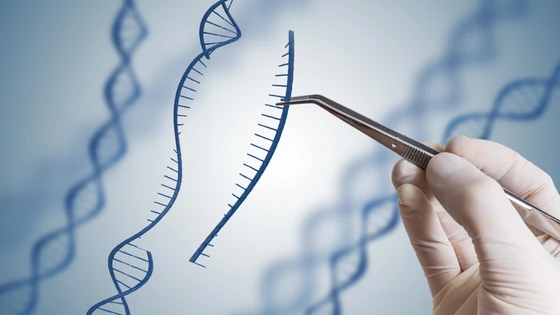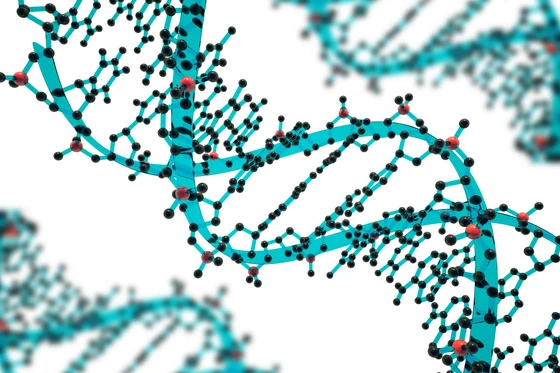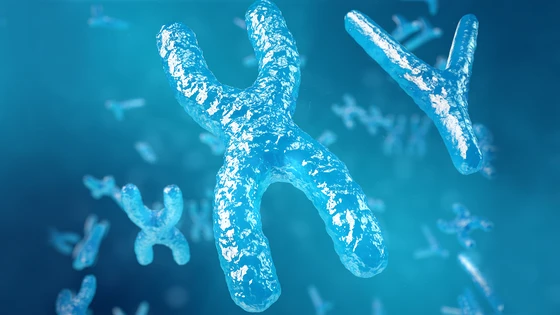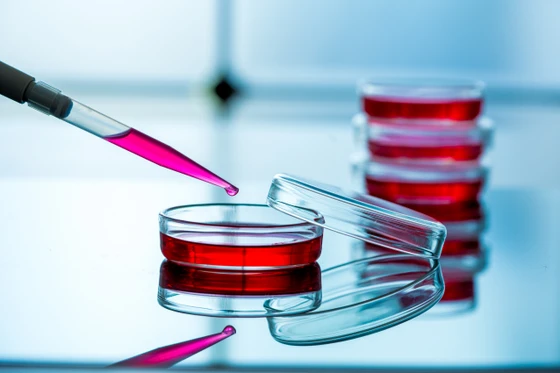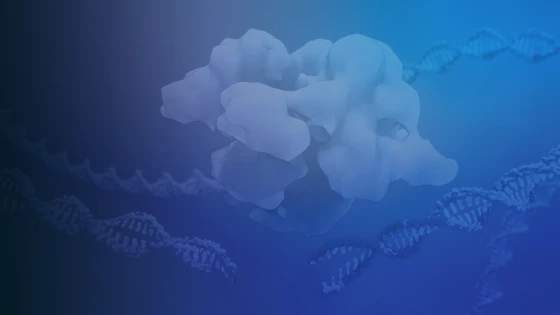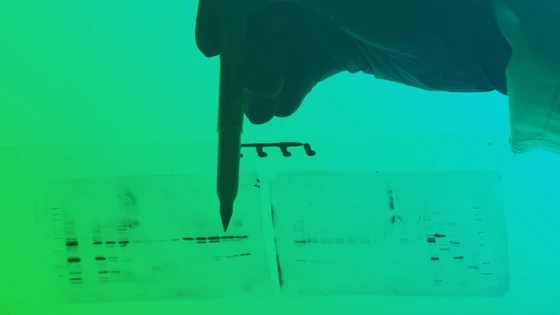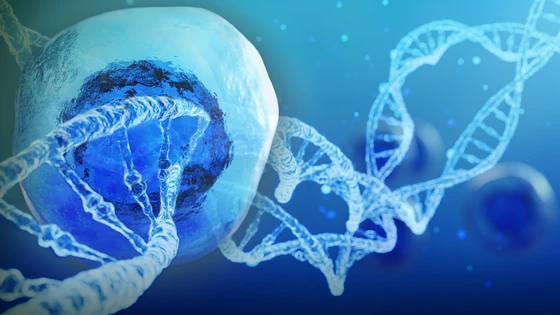Genes—the crux of genetics’ studies—are heritable material consisting of a specific sequence of nucleotides. In cells, genes are transcribed into RNA, and some of this RNA is translated into proteins that enable survival and function. The number of genes in the genome varies largely by the organism, ranging from a few hundred genes in the pathogenic bacterium Mycoplasma genitalium to thousands of genes in Homo sapiens.
One of the ways to study genes in organisms is by manipulating the gene sequence, knockout, knock-in, or base editing, using CRISPR. This allows researchers to possibly create models to understand the function of that gene as it relates to the health of the cell or organism. Unfortunately, not all genes are easy to work with. The number of copies of a gene, its essentiality, and sequence all influence the ease of editing that gene.
In this blog post, we will elaborate on each one of these factors and the considerations around them if you run into difficulties with your CRISPR experiments. Specifically, we cover the following factors:
Gene Copy Impacts CRISPR Experiments
The number of copies of a gene present in a cell can vary and that can impact the effectiveness of CRISPR editing experiments. There are a few ways a gene can have multiple copies present in a cell which will be discussed below.
There can be multiple copies of genesAn organism inherits its genes from a parental organism through DNA transmission. In some cases, the organism will inherit multiple copies of a gene. A higher number of gene copies makes CRISPR editing more challenging, as one needs to ensure that all copies of that gene are edited. The multiplicity of copies of a gene in an organism are primarily due to its ploidy. Ploidy is the number of complete sets of chromosomes in a cell, and hence the number of possible alleles a cell may have. Each of these inherited copies of the genes is known as an allele.
- Haploid - Single Copy
- Diploid - Two Copies
- Triploid - Three Copies
- Tetraploid - Four Copies
- Polyploid - Many Copies
An organism inherits its genes from a parental organism through DNA transmission. In some cases, the organism will inherit multiple copies of a gene. A higher number of gene copies makes CRISPR editing more challenging, as one needs to ensure that all copies of that gene are edited. The multiplicity of copies of a gene in an organism are primarily due to its ploidy. Ploidy is the number of complete sets of chromosomes in a cell, and hence the number of possible alleles a cell may have. Each of these inherited copies of the genes is known as an allele.
- Haploid - Single Copy
- Diploid - Two Copies
- Triploid - Three Copies
- Tetraploid - Four Copies
- Polyploid - Many Copies
Ploidy relation to gene copyMany plants, fish, and amphibians are polyploid where they contain many copies of genes they have inherited from the parental organism. Multiple copies of a gene are due to the ploidy of an organism. Having multiple copies of a gene can be advantageous for an organism to survive if there were to be a mutation in one of the copies. However, having multiple copies of a gene present makes it difficult to manipulate a gene's expression by performing a CRISPR edit if there are multiple copies of a gene. Knowing how many copies of a gene present in a cell or organism you are studying can help you prepare how to approach your CRISPR edit experiments.
For instance, humans inherit one chromosome from each parent, making them diploid. However, there are many human immortalized cell lines, such as 293 [HEK-293] (ATCC® CRL-1573™) and hTERT RPE-1 (ATCC® CRL-4000™), which are not perfect diploid human cells. They are actually considered to be “hypotriploid” or “near-diploid” because they have more than two sets of chromosomes but less than three chromosomes on average which can be advantageous for survival.
Karyotyping is one method that allows you to look for chromosomal abnormalities in quantity and structure. This will help determine how many chromosomes are present in your cell line. Once you know how many chromosomes are present in your cell line, you can continue on with the analysis of your CRISPR edits. If you know how many chromosomes are present in your cell line, Synthego’s Interference of CRISPR Edits (ICE) bioinformatics tool can help you determine the zygosity of your cell clones. For more information on ICE and how to interpret your CRISPR edits, check out Synthego’s ICE Knockout Analysis Protocol, ICE Knock-In Analysis Protocol, Step-By-Step ICE Analysis Guide, and Synthego’s YouTube ICE Webinar Series.
Many plants, fish, and amphibians are polyploid where they contain many copies of genes they have inherited from the parental organism. Multiple copies of a gene are due to the ploidy of an organism. Having multiple copies of a gene can be advantageous for an organism to survive if there were to be a mutation in one of the copies. However, having multiple copies of a gene present makes it difficult to manipulate a gene's expression by performing a CRISPR edit if there are multiple copies of a gene. Knowing how many copies of a gene present in a cell or organism you are studying can help you prepare how to approach your CRISPR edit experiments.
For instance, humans inherit one chromosome from each parent, making them diploid. However, there are many human immortalized cell lines, such as 293 [HEK-293] (ATCC® CRL-1573™) and hTERT RPE-1 (ATCC® CRL-4000™), which are not perfect diploid human cells. They are actually considered to be “hypotriploid” or “near-diploid” because they have more than two sets of chromosomes but less than three chromosomes on average which can be advantageous for survival.
Karyotyping is one method that allows you to look for chromosomal abnormalities in quantity and structure. This will help determine how many chromosomes are present in your cell line. Once you know how many chromosomes are present in your cell line, you can continue on with the analysis of your CRISPR edits. If you know how many chromosomes are present in your cell line, Synthego’s Interference of CRISPR Edits (ICE) bioinformatics tool can help you determine the zygosity of your cell clones. For more information on ICE and how to interpret your CRISPR edits, check out Synthego’s ICE Knockout Analysis Protocol, ICE Knock-In Analysis Protocol, Step-By-Step ICE Analysis Guide, and Synthego’s YouTube ICE Webinar Series.
Gene copy number variation can fluctuate in organismsAnother factor that can make a gene difficult to work with is the copy number variation or CNV. CNV is where a gene may have multiple copies present in an organism. The number of copies of that gene can vary from one organism to the next. Depending on how many copies there are in one particular organism, this can create a gain or loss of genomic material. CNVs can be advantageous because if a mutation were to occur in one of the copies of the gene affecting the protein expression and function, the other wildtype copies can still be expressed preventing further loss of protein activity. In humans, roughly 12% of the genome contains CNVs, and about 12 CNVs are present in each individual. The loss of genetic material due to CNVs is a disadvantage because a loss in a gene can create complications of survival. Even with CNV’s present in all of us, the majority of us are healthy. Unfortunately, some individuals are not so lucky where one or more of the CNVs can be associated with disease development. Examples of diseases CNVs are associated with are breast cancer, Alzheimer's disease, autism, and Parkinson’s disease.
Another factor that can make a gene difficult to work with is the copy number variation or CNV. CNV is where a gene may have multiple copies present in an organism. The number of copies of that gene can vary from one organism to the next. Depending on how many copies there are in one particular organism, this can create a gain or loss of genomic material. CNVs can be advantageous because if a mutation were to occur in one of the copies of the gene affecting the protein expression and function, the other wildtype copies can still be expressed preventing further loss of protein activity. In humans, roughly 12% of the genome contains CNVs, and about 12 CNVs are present in each individual. The loss of genetic material due to CNVs is a disadvantage because a loss in a gene can create complications of survival. Even with CNV’s present in all of us, the majority of us are healthy. Unfortunately, some individuals are not so lucky where one or more of the CNVs can be associated with disease development. Examples of diseases CNVs are associated with are breast cancer, Alzheimer's disease, autism, and Parkinson’s disease.
How gene copy number influences CRISPR outcomesKnowing the copy number variations of a gene can help you design a more successful CRISPR experiment. The higher the number of copies, either because of cell ploidy or due to the presence of CNVs, the harder it is to conduct a CRISPR edit. For example, in a CRISPR knockout experiment in a human cell line, if all variations of the gene are not knocked out, the unaltered wildtype variation of the gene will most likely still be expressed, thus influencing your downstream assays. For CRISPR knock-in experiments, where you want to introduce a single nucleotide polymorphism (SNP) in a gene, the SNP needs to be introduced in all CNVs for an effective knock-in. To fully understand how many CNVs are present, real-time quantitative PCR can be utilized because it is relatively inexpensive and has a fast turnaround time.
Knowing the copy number variations of a gene can help you design a more successful CRISPR experiment. The higher the number of copies, either because of cell ploidy or due to the presence of CNVs, the harder it is to conduct a CRISPR edit. For example, in a CRISPR knockout experiment in a human cell line, if all variations of the gene are not knocked out, the unaltered wildtype variation of the gene will most likely still be expressed, thus influencing your downstream assays. For CRISPR knock-in experiments, where you want to introduce a single nucleotide polymorphism (SNP) in a gene, the SNP needs to be introduced in all CNVs for an effective knock-in. To fully understand how many CNVs are present, real-time quantitative PCR can be utilized because it is relatively inexpensive and has a fast turnaround time.
Essential Genes Are Hard to Study
Another factor that makes editing a gene more challenging is whether the gene is essential or not. For a cell to survive, the cell must maintain its central metabolism and cellular structure, replicate DNA, translate genes into proteins, and regulate molecule transport processes. All of these molecular pathways depend on the expression of certain genes that are essential for the cell to survive.
What are essential genes?Essential genes are genes that a cell relies on for survival. The essentiality of a gene can vary across different cell types because each cell type requires different modulators to regulate the metabolic pathways required for survival. If you were to knock out an essential gene, the cell will die due to the lack of expression of the essential gene. So how can you find out if your gene of interest is essential or not?
Essential genes are genes that a cell relies on for survival. The essentiality of a gene can vary across different cell types because each cell type requires different modulators to regulate the metabolic pathways required for survival. If you were to knock out an essential gene, the cell will die due to the lack of expression of the essential gene. So how can you find out if your gene of interest is essential or not?
Finding information about essential genesA common online resource tool that provides analytical information of a gene relating to a cell's ability to survive is called Dependency Map (DepMap). The key feature to DepMap is it focuses on immortalized human cell lines and the essentiality of a gene is based on CRISPR and RNAi loss of function screens. When you enter your gene of interest into DepMap, it will provide you with a plethora of information around it, such as the dependency of the cell lines on that gene to survive, if there are any co-dependent genes that your gene relies on, and a brief description of the gene. If DepMap were to identify your gene to be “common essential”, it means the cell relies on that gene for survival making it difficult to knock out that gene and have the cell line survive.
A common online resource tool that provides analytical information of a gene relating to a cell's ability to survive is called Dependency Map (DepMap). The key feature to DepMap is it focuses on immortalized human cell lines and the essentiality of a gene is based on CRISPR and RNAi loss of function screens. When you enter your gene of interest into DepMap, it will provide you with a plethora of information around it, such as the dependency of the cell lines on that gene to survive, if there are any co-dependent genes that your gene relies on, and a brief description of the gene. If DepMap were to identify your gene to be “common essential”, it means the cell relies on that gene for survival making it difficult to knock out that gene and have the cell line survive.
CRISPR editing of essential genesIn that scenario, You may have to seek alternative ways to disrupt gene expression and use alternative methods such as CRISPRi or RNAi-based knockdown to interfere with the expression of your gene of interest without fully knocking it out. Additionally, heterozygous knockout clones for your essential gene can be created using Cas9-mediated CRISPR editing so you do not fully disrupt the essential gene expression which leads to lethality. As a heterozygous clone still bears a wild type copy of the gene, there is still expression of the essential gene that the cell can rely on to survive. In some instances, two non-essential genes can be knocked out in a specific sequential order which can lead to lethality. Such ongoing studies give a better understanding of how some diseases, such as cancer, can overcome gene knockouts and survive. No matter the case or research, essential genes are crucial for an organism to survive. Altering their genetic sequence in any way can lead to lethality, therefore, making essential genes difficult to edit.
In that scenario, You may have to seek alternative ways to disrupt gene expression and use alternative methods such as CRISPRi or RNAi-based knockdown to interfere with the expression of your gene of interest without fully knocking it out. Additionally, heterozygous knockout clones for your essential gene can be created using Cas9-mediated CRISPR editing so you do not fully disrupt the essential gene expression which leads to lethality. As a heterozygous clone still bears a wild type copy of the gene, there is still expression of the essential gene that the cell can rely on to survive. In some instances, two non-essential genes can be knocked out in a specific sequential order which can lead to lethality. Such ongoing studies give a better understanding of how some diseases, such as cancer, can overcome gene knockouts and survive. No matter the case or research, essential genes are crucial for an organism to survive. Altering their genetic sequence in any way can lead to lethality, therefore, making essential genes difficult to edit.
DNA Sequence & Accessibility Hinders CRISPR Editing
In addition to the copy number and a gene being essential, the actual nucleotide sequence can create complications with validating your CRISPR edits. This can be troubling because if you cannot amplify and validate the sequence where the CRISPR edit occurred, how do you know the CRISPR edit is successful? Additionally, some regions of the genome can be harder for the CRISPR nuclease to access due to DNA packaging and/or the presence of epigenetic modifications, making certain genes more challenging to edit.
Sequence compositionThe sequence of a gene can make sequence validation and conducting a CRISPR edit difficult and challenging. An example of sequence validation complications could be caused by the genetic sequence itself. Regions in the genome that contain repeating stretches of nucleotides and/or are GC enriched are challenging to edit. In both of these regions, sequence slippage can occur resulting in the mispairing of the complementary bases. This can make genotyping regions containing these stretches of repeats and GC rich regions challenging to sequence because different primers will cause sequencing to pass through these regions differently producing unreliable sequencing results making it hard to validate the genotype of your edited samples.
The sequence of a gene can make sequence validation and conducting a CRISPR edit difficult and challenging. An example of sequence validation complications could be caused by the genetic sequence itself. Regions in the genome that contain repeating stretches of nucleotides and/or are GC enriched are challenging to edit. In both of these regions, sequence slippage can occur resulting in the mispairing of the complementary bases. This can make genotyping regions containing these stretches of repeats and GC rich regions challenging to sequence because different primers will cause sequencing to pass through these regions differently producing unreliable sequencing results making it hard to validate the genotype of your edited samples.
DNA packagingAnother factor that can make conducting a CRISPR edit more challenging is reduced access to the DNA due to chromatin structure. In eukaryotic organisms, DNA packaging and accessibility play a major role in gene expression. The DNA of eukaryotic organisms wraps around histone in an octamer complex called nucleosome--akin to beads on a string. When these nucleosomes are condensed together, they form chromatin structures. The cumulative action of condensing nucleosomes into the chromatin and condensing of chromatin with neighboring chromatin forms a tightly wound bundle of DNA and protein called a chromosome. The condensing action of packaging DNA into the chromosome means the DNA is tightly wound together making it hard for DNA to be accessed. Even when the DNA is unwound, there can still be regions of DNA that are tightly packaged in the chromatin making them more difficult to access. Chromatin can be organized as euchromatin or heterochromatin. Euchromatin is when the chromatin is in an open arrangement and allows normal expression of a DNA region and that region would be easier to perform a CRISPR edit. Heterochromatin is where the chromatin is in a closed arrangement, making the DNA region less accessible and impairing gene expression. If your gene of interest is in one of these tightly packed and hard-to-access regions, it will be more challenging to edit than if it is encoded in an open chromatin region. If you are experiencing complications with accessing your gene of interest, you are not alone. Some researchers are trying to solve this issue by using CRISPR-Cas9 to understand how to open up tightly packed chromatin to access the hard to reach regions of DNA.
Another factor that can make conducting a CRISPR edit more challenging is reduced access to the DNA due to chromatin structure. In eukaryotic organisms, DNA packaging and accessibility play a major role in gene expression. The DNA of eukaryotic organisms wraps around histone in an octamer complex called nucleosome--akin to beads on a string. When these nucleosomes are condensed together, they form chromatin structures. The cumulative action of condensing nucleosomes into the chromatin and condensing of chromatin with neighboring chromatin forms a tightly wound bundle of DNA and protein called a chromosome. The condensing action of packaging DNA into the chromosome means the DNA is tightly wound together making it hard for DNA to be accessed. Even when the DNA is unwound, there can still be regions of DNA that are tightly packaged in the chromatin making them more difficult to access. Chromatin can be organized as euchromatin or heterochromatin. Euchromatin is when the chromatin is in an open arrangement and allows normal expression of a DNA region and that region would be easier to perform a CRISPR edit. Heterochromatin is where the chromatin is in a closed arrangement, making the DNA region less accessible and impairing gene expression. If your gene of interest is in one of these tightly packed and hard-to-access regions, it will be more challenging to edit than if it is encoded in an open chromatin region. If you are experiencing complications with accessing your gene of interest, you are not alone. Some researchers are trying to solve this issue by using CRISPR-Cas9 to understand how to open up tightly packed chromatin to access the hard to reach regions of DNA.
Epigenetic modificationsLastly, the presence of certain epigenetic modifications can render a gene difficult to edit because these modifications do not alter the DNA sequence itself but can alter the accessibility of the DNA sequence. Two important epigenetic modifications play a major role in DNA accessibility. Methylation is one modification that can occur on DNA and histones, influencing the histones to pack the DNA tighter and decreasing the accessibility of that region of DNA. Acetylation modifications have the opposite effect, inducing the histones to loosen their restriction on DNA allowing increased accessibility of a DNA region. In addition to restricting DNA access when found on histones, methylation can also impact gene expression when found on promoters of genes. Methylation of a promoter blocks transcription factors from binding to the DNA inhibiting gene expression. DNA accessibility can change based on what epigenetic modifications are present so it is crucial to know if the region of your gene of interest is prone to these types of modifications in the cell line that you are using as a model.
Life on Earth relies on certain genes being expressed. As researchers try to understand these genes and their roles in nature, some of these genes have been found to be more difficult to edit using CRISPR than others because of the factors mentioned above. When investigating your gene of interest further, make sure to consider all of these factors that can influence the success of your experimentation. If one of these factors impacts your research, it is not the end of the world. Being creative in how you study your gene of interest can be your leap over these difficult hurdles.
Lastly, the presence of certain epigenetic modifications can render a gene difficult to edit because these modifications do not alter the DNA sequence itself but can alter the accessibility of the DNA sequence. Two important epigenetic modifications play a major role in DNA accessibility. Methylation is one modification that can occur on DNA and histones, influencing the histones to pack the DNA tighter and decreasing the accessibility of that region of DNA. Acetylation modifications have the opposite effect, inducing the histones to loosen their restriction on DNA allowing increased accessibility of a DNA region. In addition to restricting DNA access when found on histones, methylation can also impact gene expression when found on promoters of genes. Methylation of a promoter blocks transcription factors from binding to the DNA inhibiting gene expression. DNA accessibility can change based on what epigenetic modifications are present so it is crucial to know if the region of your gene of interest is prone to these types of modifications in the cell line that you are using as a model.
Life on Earth relies on certain genes being expressed. As researchers try to understand these genes and their roles in nature, some of these genes have been found to be more difficult to edit using CRISPR than others because of the factors mentioned above. When investigating your gene of interest further, make sure to consider all of these factors that can influence the success of your experimentation. If one of these factors impacts your research, it is not the end of the world. Being creative in how you study your gene of interest can be your leap over these difficult hurdles.
Free CRISPR Consultation
Want to know how to optimize your CRISPR experiment to get guaranteed editing results? Schedule a free discovery call and project consultation with a genome engineering expert.

